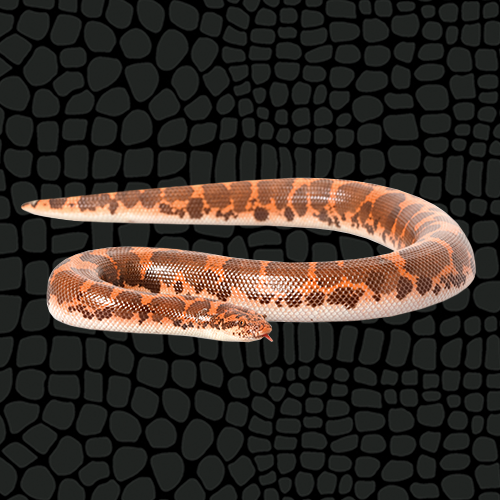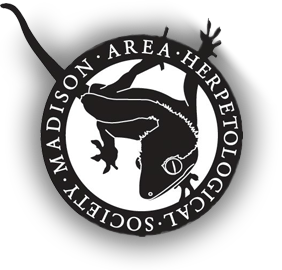Kenyan Sand Boa
The Original Sand Worm
Far from the popularized sandworms seen in science fiction such as the Sarlaac in Star Wars and Sandworms in Beetlejuice, Sand Boas and docile subterranean full bodied snakes with small heads and no discernable neck. Although terrifying to their prey in the wild, to keepers, and herpers (those who go looking for reptiles in the wild such as in our mini-series, Beyond the Glass) alike they are adorable. Spending the majority of their time under the sand with only their eyes exposed, these ambush predators make a unique pet.
Habitat
Kenyan Sand Boas are from the arid sandy scrublands, deserts, and rocky edges of western Africa. Loose sand is the preferred habitat for these boas to allow them to burrow into as evidenced by their torpedo shaped body. Kenyan Sand Boas are found within Kenya as well as Egypt, Sudan, Ethiopia, Libya, Tanzania, and other western countries. These boas are not climbers as made evident by their very round bodies. Flat rocks will be used by boas to bask and can be a great addition to their habitat.
Housing
Even though Kenyan Sand Boas are not climbers normally, they still require sealed and escape proof housing as they are smart, curious, and talented escape artists. As babies, they can start out in a Zilla 20L Front Opening Terrarium or Zilla 10G Critter Cage. It’s important to remember that as they grow and develop, they will require larger accommodations. Males are smaller than females but both sexes can live their lives comfortably in a Zilla 20L Front Opening Terrarium. Large adult female Kenyan Sand Boas will do best in Zilla 40BR Front Opening Terrarium or Zilla 40BR Critter Cage. Despite their name, Kenyan Sand Boas do not require sand. They do however require dry substrate that allows for burrowing behaviors such as Zilla Bark Blend , Zilla Desert Blend, and Zilla Snake and Lizard Litter. Flat stones should be created for basking spots or a Zilla Basking Platform Ramp buried into the substrate a bit. Provide them with a Zilla Terraced Dish for drinking. Use caution that the water dish is not too deep as Kenyan Sand Boas will spend too much time in the water if given the chance and can stop eating from filling up on water. This is a natural behavior based on their instinct of their native regions. Replace the substrate, as well as clean and disinfect the enclosure and its furnishings at least every 2-3 months.
Temperature and Lighting
It is important to create a thermal gradient (or a warm and cool side) in the cage/enclosure. This can be done with an appropriate sized Zilla Heat Mat adhered to the bottom of the tank on one side. Ideal temperatures for Kenyan Sand Boa range from 76-82°F on the cool side and 80-85°F on the warm side. Provide an 95°F basking area on the warm side. Using a Zilla Mini Heat & UVB Fixture with a Zilla 50W Mini Halogen bulb and a Zilla Tropical Mini Compact Fluorescent UVB Bulb will provide the correct heat and UV for your Sand Boa to thrive. Placing the heat bulb over the basking platform is ideal. While Kenyan Sand Boas don’t need UVB to survive, UVA/UVB light has been shown to greatly improve the immune system, health, and wellness of all reptiles, both diurnal and crepuscular. Spot clean the enclosure for urates and feces once a week. Every 3 months remove all substrate in order to clean and disinfect the tank and décor.
Feeding and Diet
In the wild, Kenyan Sand Boas will prey upon any animal they find in the desert. Desert living required them to be opportunistic. Their natural diet is small rodents, lizards, and even small birds! Most hatchlings can be started off on pinkie mice every 5-7 days. Food items can gradually be increased as needed. Most adult Kenyan Sand Boas can be fed adult mice 7-10 days. A general rule of thumb to follow when feeding snakes is to provide prey items that are approximately the same width as the widest point of the snake. However, in Sand Boas, feeding prey only as large as the widest part of their head is better because of their small size. When possible, try to get the snake to eat frozen thawed rodents. It’s safer for the snake and easier to keep a larger quantity on hand for weekly feeding.
Handling
As with many snakes, hatchling and juvenile Kenyan Sand Boas may initially be nervous and defensive. Due to their poor eyesight, Sand Boas may flail around and even try to bite when startled. Handle your Sand Boa gently and deliberately taking care not to drop or injure the animal. Handling them close to the ground or a flat surface may help them feel more secure. Most Sand Boas will become more tolerant and accustomed to handling as they become older.
Be sure to wash your hands after handling any reptiles.


